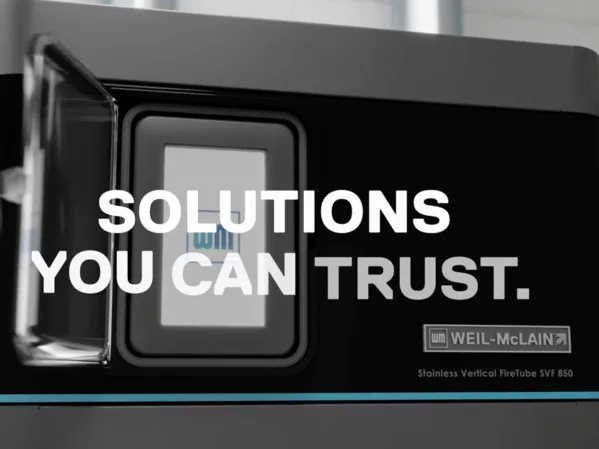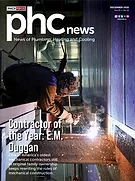Construction sites can be dangerous places for design professionals when they visit a site to verify construction progress. They include many hazards, and design professionals should be trained to recognize and avoid them. The following is a discussion covering some common safety hazards that lead to worker injuries and deaths in construction, according to the Occupational Health and Safety Administration (OSHA).
1. Falls from working at heights
The leading cause of construction fatalities is falling from heights. According to OSHA worksite accident statistics, almost half of worker fatalities are due to a fall from heights. Falls can occur when working on ladders, scaffolding or incomplete structures under construction or during demolition.
All employees, including design professionals who visit jobsites, need suitable training when working at heights, and such work must be planned appropriately. Safety approaches and precautions should be adopted, such as guardrails or edge protection when working at heights on a scaffold.
Where practical, avoid the need to work at height. This cannot always be avoided, so design professionals and construction companies should be vigilant to put collective safety measures in place to minimize the risks.
Equipment such as safety harnesses, shock-absorbing lanyards, safety belts, fall arrestors, anchors, tie-off points, barriers around openings and safety nets should be used to provide an extra level of safety to reduce fall risks. There is always a brief period during new construction, just after the new floor is erected or during demolition, when the safety barriers around slab edges or shafts are not yet installed and are unprotected. Workers visiting jobsites should be constantly aware of these hazards.
Most construction sites require safety officers walking the jobsite to constantly ensure these safety barriers to hazards are erected or put into place.
Some examples of workplace fall accidents are described below:
• A worker picked up a large, half-sheet of plywood lying on the floor and stepped forward while carrying the plywood in front of him. He stepped into the hole the plywood was covering over a pipe shaft.
Plywood or metal plates over shafts, holes or chases should always be secured to the slab and marked with the words “hole” or “shaft,” so that workers in the area know a hazard is under the cover. If the covering is not secured, it could be kicked or accidentally moved away from the opening.
Many jobsites also paint the letters on covers for holes or shafts and use bright colored spray paint on the edges of the coverings, which can also be a trip hazard.
• Workers mixing mortar for concrete block walls around a new elevator shaft on a high-rise building dumped sand onto the floor next to an elevator shaft. The sand covered two large sheets of plywood that covered a pipe shaft opening next to the elevator shaft.
When I was on the floor below, looking up to determine where piping could be routed to the shaft, I saw two full sheets of plywood covering the shaft above. They were bending down in the middle of the shaft and were about to break. On the floors below the top floor, which was where the plywood was, there were 2x4 barricades around the shaft openings.
However, on the floor above, there were no barricades around the shaft, only plywood over the opening in the floor, which was covered with sand. On the floor above, I recalled seeing sand on the floor but no plywood. There were footprints on the sand pile on top of the plywood where many workers had stepped, not knowing it was precariously placed.
If the plywood had snapped, it would have sent workers falling more than 20 floors to the bottom of a shaft. I notified the foreman and the safety officer.
2. Struck by moving or falling objects
Another leading cause of construction injuries and fatality incidents involves being hit by moving or falling objects or tools on a jobsite. Objects that fall, roll, fly, slide, slip and swing can do serious damage to a person. Construction workers hit by building materials, blown off high-rise buildings or slipping off of crane riggings all have a high fatality rate, but all are preventable.
Design professionals should wear all required personal protective equipment (PPE) and be aware of construction equipment, delivery trucks and overhead crane work. Stay alert for all potential overhead hazards while on a jobsite, including vehicle movement or shifting crane loads or overhead work.
About 75% of “struck-by” fatalities involve heavy equipment, such as trucks, cranes or construction equipment, according to OSHA.
Workplace injuries involving moving objects have occurred in various ways. These incidents can lead to a range of injuries, from minor bruises and cuts to more serious fractures, head trauma or even amputations.
Some examples of this type of injury include:
Being struck by nuts, bolts and tools falling during assembly of steel structures, as iron workers drop tools or nuts and bolts while trying to bolt beams into place above;
Shifting loads falling from crane rigging;
Flying construction materials during storms;
Rolling construction equipment, such as when an operator steps out and the equipment brakes are not set.
Whenever any work is being performed overhead, workers should be cleared from the fall zone. All workers should wear hard hats and other PPE on construction sites.
3. Electrocution hazards
According to OSHA, electrical shock injuries are another significant cause of injuries on worksites and can include both flash and thermal burns. Design professionals should avoid contact with exposed wires, open panels, buss bars and electrical equipment that can cause electrical shock injuries.
Assume all electrical equipment is “live” if you do not know whether it has been shut off. Maintenance personnel should use a “lock-out, tag-out” safety system that places a sign or lock-out device over the breaker or disconnect switch, a sign warning that workers are working on the system and a warning: “DO NOT TURN ON THE POWER.”
If the power is turned on during maintenance, equipment can start rotating or operating, crushing or electrocuting maintenance workers. Electrical shocks can also cause cardiovascular emergencies such as heart attacks or arrhythmia, respiratory arrest, muscle spasms, central nervous system damage, thermal burn injuries, and temporary or permanent blindness from arc flash radiation burn injuries to the eyes.
Often, electrical shocks are followed by falls and broken bones caused by the shock itself. Design professionals should be alert and aware of electrical equipment and maintain a safe distance from wires and electrical components and equipment.
4. Caught between or crushed by objects or entanglement
These types of worksite injuries include instances where workers are crushed, squeezed or pinched between objects or parts of objects. Workers have been pinned between a machine and a wall or had a limb or article of clothing caught in a machine. In some cases, the safety guard had been removed from the machine.
In other cases, workers have lost fingers or hands in a punch press, shear or metal stamping press. Loose clothing, jewelry or hair can get caught in rotating machines or moving belts, and fingers can get cut off in saws. Workers have lost their fingers and hands in pipe roll grooving machines where the guards were removed.
Heavy equipment rollovers or toppled cranes also have caused may injuries. People have been crushed when excavators or cranes rotate and the counterweights on the back crush or pinch someone against another piece of equipment or a wall.
• Trench collapses. A trench wall crushed a worker when it collapsed on him. He was working on a water line in an excavation without a trench box. Trench boxes are designed to be dropped into an excavation and provide portable structural shoring and safety protection for workers in trenches.
Any time a worker is working next to an excavation where the side of the excavation is steeper than 45 degrees, some form of shoring or bracing needs to be installed to protect workers from excavation cave-ins, which are similar to trench collapses, where a wall or structure collapses, trapping or crushing workers.
Workers and bystanders have been crushed by falling loads or structures, and injured or killed when scaffolds collapse. Workers have been crushed or pinned when materials shift during demolition or construction.
A bystander was trapped under rubble during demolition when a wall fell in the wrong direction. A dump truck driver was crushed when the dump bed suddenly came down, crushing him between the dump bed and the truck frame.
When visiting jobsites, everyone should be constantly alert and aware of their surroundings and watching for these and other types of jobsite hazards to avoid them.
5. Overexertion
Overexertion injuries can occur when trying to lift or carry too much. This includes back injuries, hernias or other injuries caused by lifting or moving heavy objects. Overexertion can also occur when design professionals visit a jobsite and climb a lot of stairs on a high-rise jobsite, causing exhaustion, or from other strenuous jobsite activities that can lead to heart attacks or heat stroke.
6. Motor vehicle accidents
Motor vehicle accidents include personal vehicles to and from the jobsite and on the jobsite. Vehicle accidents also include construction equipment accidents and the tipping of sky cranes, scissor lifts, excavators or other construction vehicles or motorized equipment while maneuvering or lifting loads.
7. Noise hazards
Exposure to noise is measured in units of sound pressure levels called decibels, using A-weighted sound levels (dBA). There are several ways to control and reduce worker exposure to noise in a workplace where exposure has been shown to be excessive.
Engineering controls involve modifying or replacing equipment or making related physical changes at the noise source or along the transmission path to reduce the noise level at the worker’s ear.
Examples of various, effective engineering controls:
Choose low-noise tools and machinery;
Maintain and lubricate machinery and equipment (e.g., oil bearings);
Place a barrier between the noise source and employee (e.g., sound walls or curtains);
Enclose or isolate the noise source.
Administrative controls are changes in the workplace or schedule that reduce or eliminate workers’ exposure to noise.
PPE used to control noise exposure includes ear protection, such as noise-canceling headphones and earplugs.
Controlling noise exposure with distance is often an effective, yet simple and inexpensive, administrative control. Specifically, for every doubling of the distance between the source of noise and the worker, the noise is decreased by about 6 dBA.
8. Asbestos/airborne dust, chemicals, fibers or materials hazards
Inhalation or explosion hazards require specialty PPE to mitigate asbestos and airborne dust, chemical, fiber and material hazards. In general, avoid dry sweeping or using leaf blowers to sweep up. Use shop vacs with proper exhaust filtration to minimize the distribution of particles. Workers should wear respirators and protective clothing and ensure proper waste disposal.
Safety training
OSHA offers two safety training courses for the construction industry. They offer an essential construction compliance safety training course and an advanced safety training course for construction supervisors and managers.
• 10-hour OSHA safety training covers essential construction compliance safety training designed to enhance the safety awareness and practices of individuals working in the construction industry. The training also covers OSHA 29 CFR 1926 standards and includes a certificate and an OSHA 10 Construction Department of Labor certification card.
• 30-hour OSHA safety training covers advanced safety training for construction supervisors and managers, offering a more extensive overview of safety regulations and practices. The training also covers OSHA 29 CFR 1926 standards and includes a certificate and an OSHA 30 Construction Department of Labor certification card.
These OSHA courses provide training on fall hazards and the use of fall protection equipment, respiratory protection for workers exposed to airborne hazards, eye and face protection (protecting the eyes and face from hazards such as flying debris or chemical splashes), and training on the prevention of construction site injuries. The 10-hour course covers construction safety procedures, hazard identification and the safe use of PPE.
The 30-hour advanced safety training for construction supervisors and managers course also covers how to develop a safe jobsite safety management program in order to have a safe and organized work environment. This includes implementing clear and effective hazard communication programs and conducting regular safety inspections to identify and address potential hazards.
Jobsite safety management programs include the following:
1. Jobsite safety analysis. Before starting work, the jobsite safety officer should conduct a thorough job safety and hazard identification survey to identify potential hazards and risks for the jobsite.
2. Safe work practices. Promoting safe work practices and encouraging workers to report any unsafe conditions or near misses is crucial.
3. Open safety communication. Creating an open communication environment where everyone feels comfortable voicing safety concerns is essential.
4. Continuous safety improvement. Regularly reviewing and improving safety procedures and practices is important for maintaining a safe work environment.
5. Personal protective equipment. The different types of PPE are:
• Basic/essential PPE. This includes hard hats, safety glasses, gloves, high-visibility clothing and safety boots. These items are crucial for protecting design professionals and workers from various hazards when visiting a worksite.
• Specialized PPE. Depending on the specific task, other PPE may be required, such as hearing protection, respiratory protection and fall protection equipment.
Ensuring PPE is properly fitted and well-maintained is essential for its effectiveness. Make sure your hard hat is adjusted properly and your clothing and safety equipment fit properly, with no loose-hanging clothes.
6. Respiratory protection. Respirators protect the user in two basic ways. The first is by the removal of contaminants from the air. Respirators of this type include particulate respirators, which filter out airborne particles, and air-purifying respirators with cartridges/canisters, which filter out chemicals and gases.
Other respirators protect by supplying clean, respirable air from another source. Respirators falling into this category include airline respirators, which use compressed air from a remote source, and self-contained breathing apparatus, which include their own air supply.





